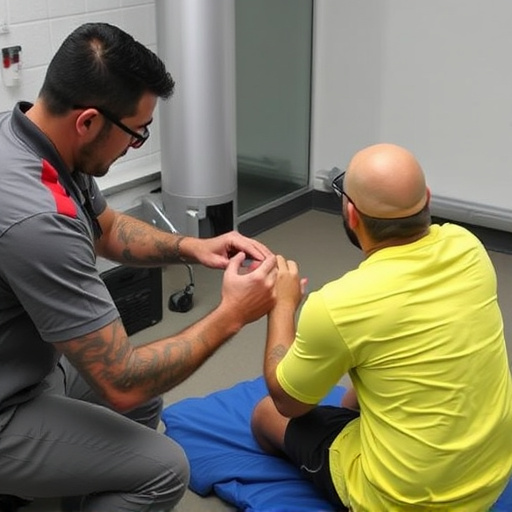Efficiently organize medical records for federal injury claims by establishing chronological order and digitizing documents with clear labeling. This method aids insurance adjusters in tracking treatment histories, particularly for ongoing conditions like neck pain, and can expedite compensation. Accurate, detailed documentation using standardized forms and Electronic Health Records (EHRs) is crucial for robust claims, ensuring consistency, reducing errors, and enhancing accessibility of patient information.
Submitting robust medical documentation is key to strengthening your federal injury claim. This comprehensive guide navigates the essential practices for organizing medical records, documenting injuries with precision, and utilizing standardized forms. Learn how timely submissions, detailed accounts, and digital storage enhance accuracy and streamline the claims process. Maximize your federal injury claim’s potential by adopting these proven tips.
- Organize Medical Records for Efficient Claims Processing
- Documenting Injuries: Timing, Detailed Descriptions, and Supporting Evidence
- Standardized Forms and Digital Storage for Federal Injury Claims Accuracy
Organize Medical Records for Efficient Claims Processing

Organizing medical records is a critical step in ensuring efficient claims processing for federal injury claims. It’s essential to maintain a structured and easily accessible system that allows for quick retrieval of relevant documents. Start by creating a chronological order of your medical history, especially if you’ve undergone multiple treatments or surgeries. This arrangement will make it simpler for insurance adjusters and medical professionals to follow your healthcare journey.
Additionally, digitize your records whenever possible. Scanning and storing them electronically not only saves physical space but also enables faster sharing and access during the claims process. Ensure each document is clearly labeled with dates, provider names, and specific treatments or procedures. This meticulous organization will streamline the auto accident recovery process and potentially speed up compensation for injuries, especially those leading to persistent neck pain relief needs or other medical conditions requiring non-invasive treatment.
Documenting Injuries: Timing, Detailed Descriptions, and Supporting Evidence

When documenting injuries for federal injury claims, timing is crucial. It’s essential to record details of any harm or aggravation as soon as possible after the incident occurs. This ensures accuracy and provides a clear timeline of events that can significantly strengthen your claim. Prompt documentation also helps in preserving evidence before it may be altered or lost over time.
In terms of detailed descriptions, provide comprehensive accounts of your injuries. Describe the nature, severity, and duration of symptoms, including any pain, limitations in movement, or other physical manifestations. Use specific language to describe changes in your condition and how they impact your daily life. Additionally, support your claims with relevant evidence such as medical images, treatment records, and prescription medications. Consider documenting through a journal entries detailing your experiences and the impact on your functionality, including any challenges faced during recovery, like adapting to neck pain treatment or undergoing functional rehabilitation, or even trying shockwave therapy for persistent issues.
Standardized Forms and Digital Storage for Federal Injury Claims Accuracy

In the pursuit of strong federal injury claims, accurate documentation is paramount. Standardized forms are a critical tool for maintaining consistency and reducing errors in medical records. These standardized forms ensure that all relevant information, from patient history to treatment details, is captured comprehensively and efficiently. By utilizing these forms, healthcare providers can streamline the process of documenting injuries, especially in cases involving complex conditions such as spinal adjustments or chiropractic treatments.
Digital storage further enhances the accuracy and accessibility of medical documentation for federal injury claims. Electronic health records (EHRs) not only safeguard patient data from physical damage but also enable quick retrieval and sharing of information among authorized parties. This is particularly beneficial for patients undergoing sciatica treatment or other specialized care, as it facilitates seamless communication between healthcare providers, ensuring continuity and coordination in their federal injury claims.
Streamlining medical documentation is key to navigating federal injury claims successfully. By organizing records, documenting injuries accurately with timely details and supporting evidence, and utilizing standardized forms alongside digital storage, claimants can enhance the efficiency of their claims processing. These practices ensure comprehensive, accurate representations of injuries, ultimately strengthening federal injury claims.














